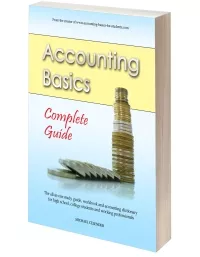Settlement Discount Granted and VAT
by Yoli
(Durban, South Africa)
 Q: How will the VAT input and output be treated when settlement discount is granted?
Q: How will the VAT input and output be treated when settlement discount is granted?
A: For those who aren't familiar with this term, VAT is short for Value-Added Tax. This is a tax on the "value" a business "adds," which is usually the same as the profit you make (the "value" is basically the difference between how much you sell something for and the cost of buying or making that thing).
VAT is basically a sales tax and is added to the price that you're selling an item at.
VAT is a tax that is charged in many countries around the world and at differing rates in each country. Some countries do not charge VAT but rather have a General Sales Tax (GST).
Now recording VAT is not so straightforward - you have 2 accounts when you're recording VAT, VAT Input and VAT Output.
VAT Input is recorded whenever you spend on things - i.e. whenever there is an expense or asset purchased.
VAT Input means you're claiming money from the tax authorities (you're recording a debtor/receivable).
Likewise VAT Output is recorded when you make income.
VAT Output means you owe more money to the tax authorities (you're recording a creditor/payable). Usually the VAT Output is much greater than the VAT Input, which means the business has a tax liability and owes VAT overall.
Settlement discount is the same
Settlement discount granted is an expense (the opposite of this is settlement discount received, which is an income for your business).
Because settlement discount granted is an expense, we record VAT Input on it.
Here's an example to show what happens when we have a settlement discount.
Let's say VAT is 10% and we sell an item usually worth $100 ($110 with VAT included) for a total of only $88 (also including VAT).
The entries would be:
Dr Debtors $110
Cr Sales $100
Cr VAT Output $10 ($110 - $100)
This is the first entry, when we record the income and debt owed to us.
Here's the second entry:
Dr Bank $88
Dr Discount granted $20 ($22 x 100/110)
Dr VAT Input $2 ($22 x 10/110)
Cr Debtors $110
In this second entry we cancel out the debt owed (debtors).
VAT Output is recorded because of the income, the sale.
VAT Input is also recorded because of the expense, the discount granted.
The discount of $22 ($110 - $88) is divided 100:10 into 100% expense (discount) of $20 and 10% VAT input ($2). The overall $22 discount is essentially 110% (100% + 10%).
Hope that makes sense...
Best,
Michael Celender
Related Questions & Tutorials:
- How to Calculate VAT
- Lesson on Recording Income on Credit
- Lesson on Recording Payment by Debtors
- Lesson on Recording an Accrued Expense (expense owing)
Return to our page of Full Accounting Questions and Answers
Comments for Settlement Discount Granted and VAT
|
||
|
||
|
||
|
||
|
||
|
||
© Copyright 2009-2021 Michael Celender. All Rights Reserved.
Click here for Privacy Policy.



